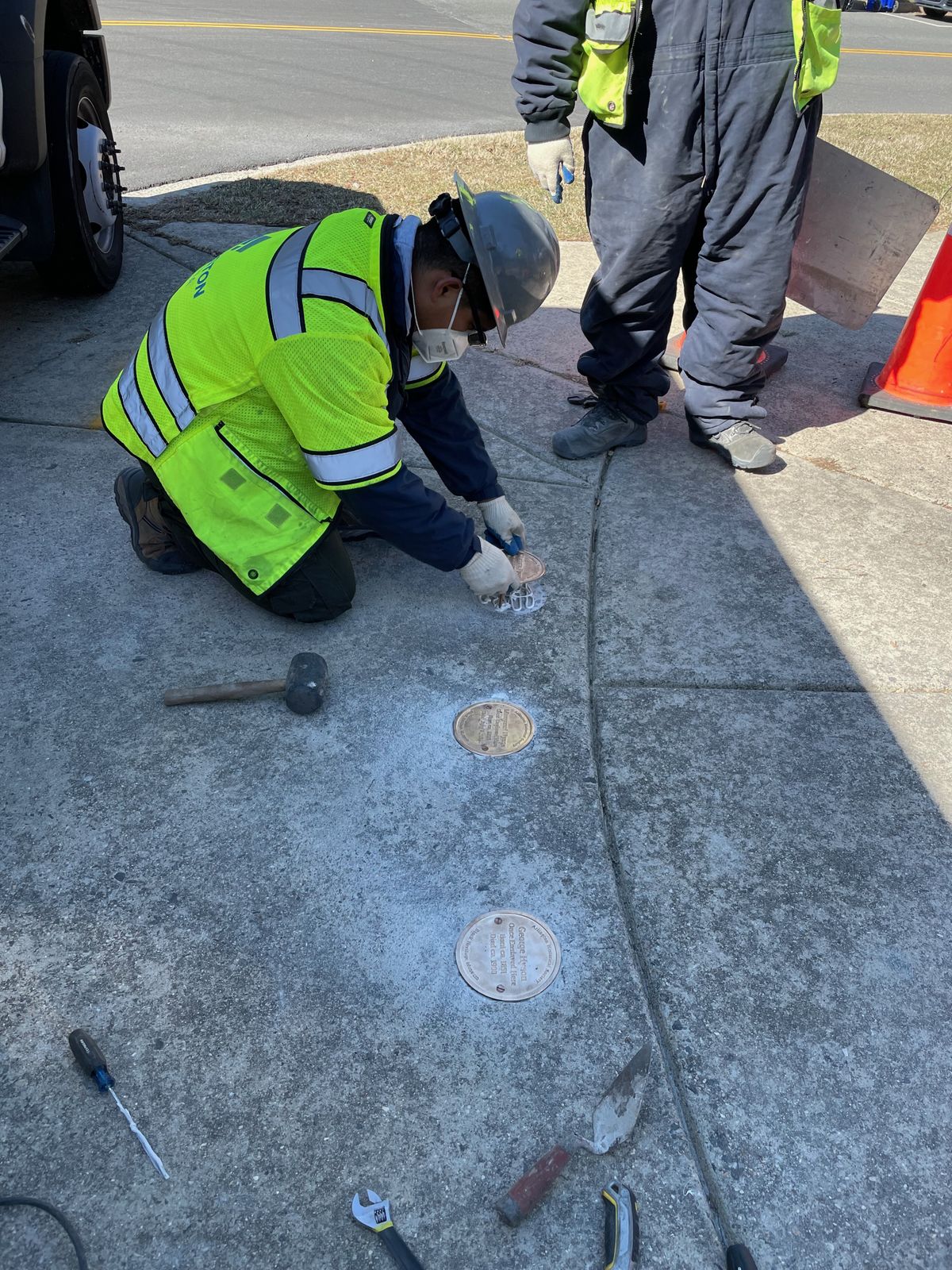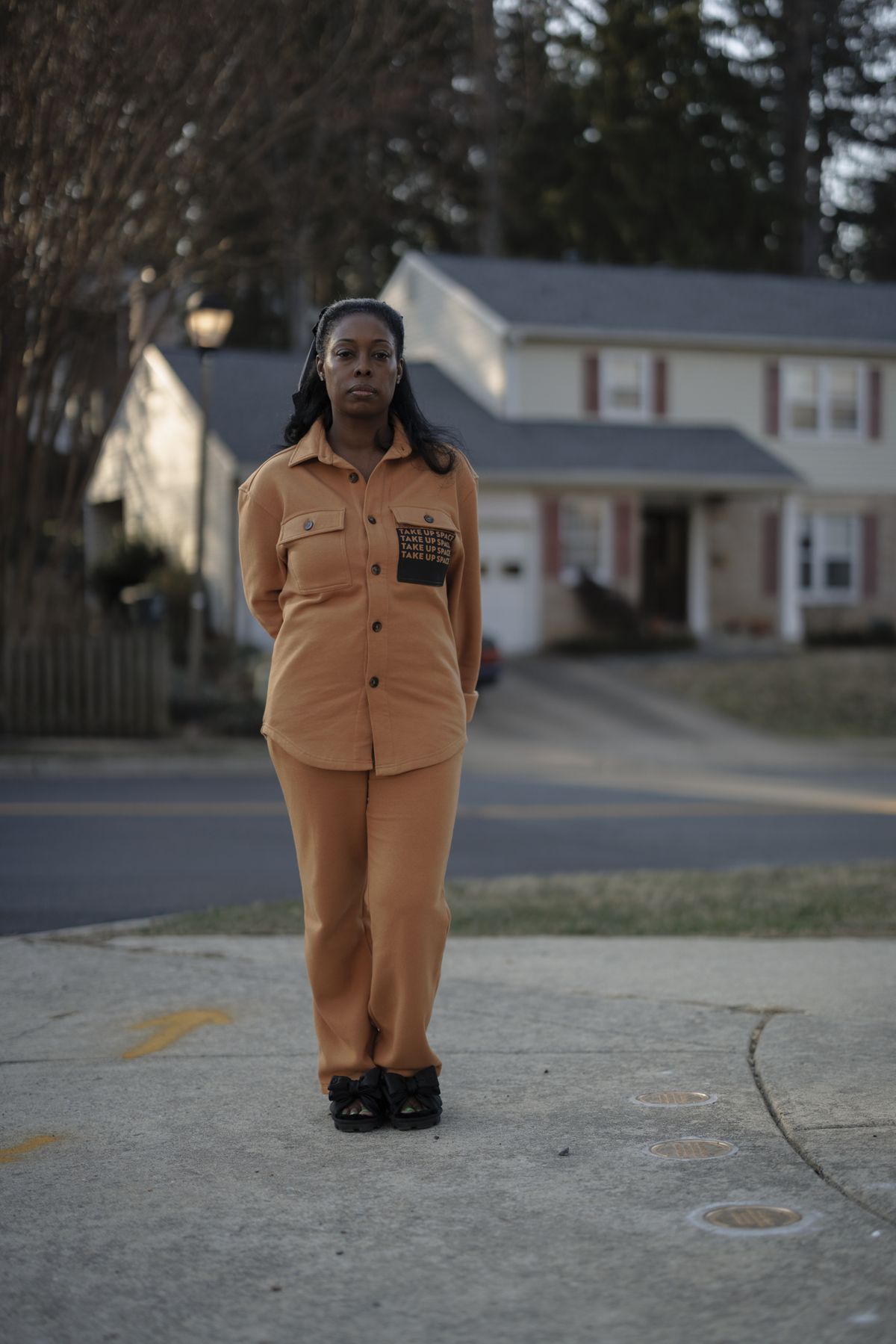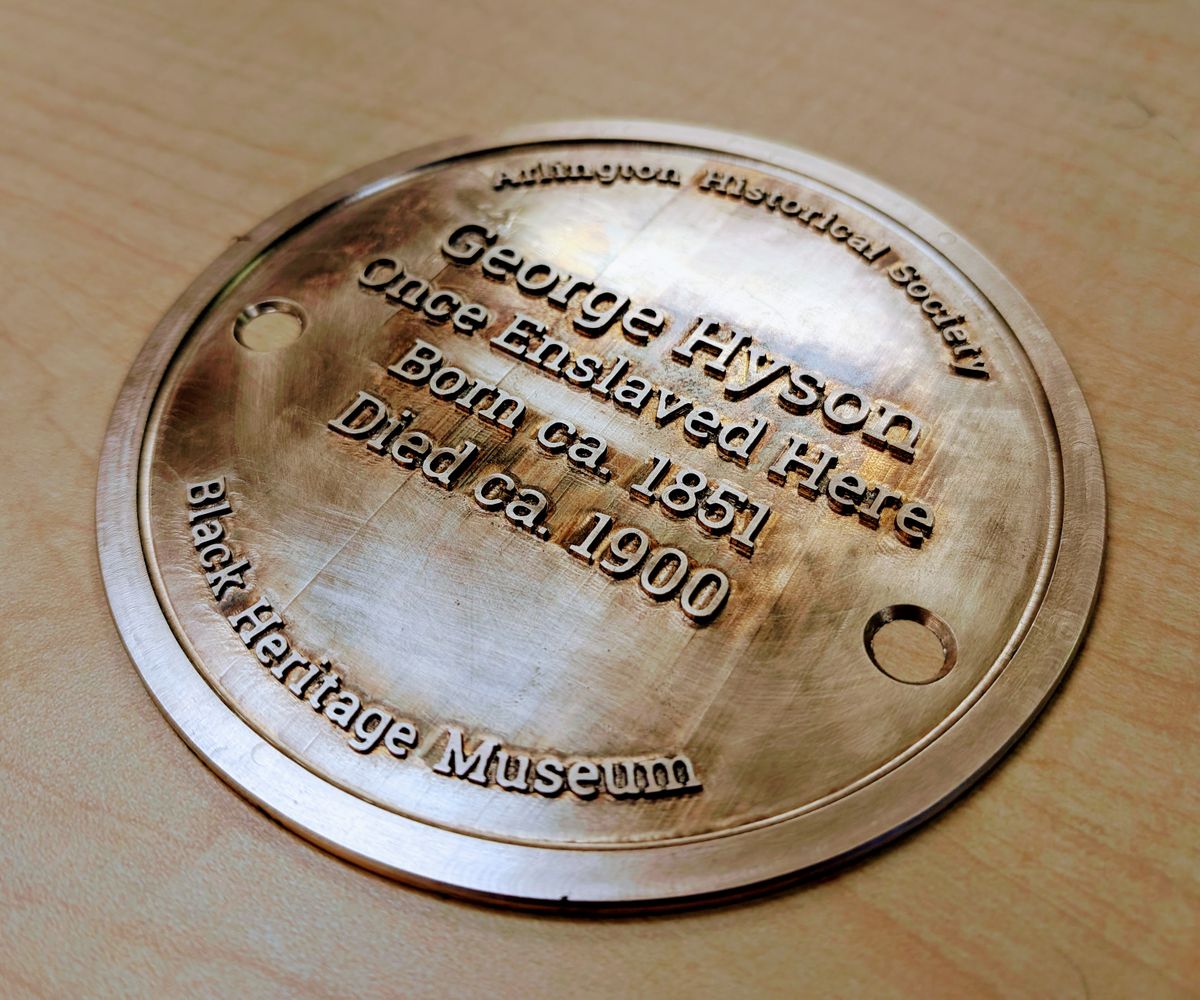The way we remember slavery is changing. One city is taking the lead
Nadia Conyers in Arlington, Virginia. Her family history can be traced back to individuals who were enslaved by Confederate Gen. Robert E. Lee. MUST CREDIT: Moriah Ratner/For The Washington Post (Moriah Ratner/For The Washington Post)
Nadia Conyers walked in her enslaved ancestors’ footsteps every day when she was in high school. Literally.
Because American slavery wasn’t only practiced on vast plantations or sprawling fields out of view from most eyes, the way our nation often depicts the 246 years it was legal to own people.
Slavery was a common and ubiquitous part of life on the grounds that would become Conyers’ alma mater, Yorktown High School in Arlington, Virginia. That land was where William and Catherine Minor enslaved dozens of people, including Conyers’ family members.
“This is part of our history, but more important, this is America’s history,” says Conyers, 44. “Right here, right where I spent some of my most formative years.”
Conyers is returning to her high school on Saturday to see a memorial dedicated to those family members: Margaret, Charlotte and George Hyson, who lived and worked on “Springfield,” a 110-acre farm.
It’s not a statue or an obelisk, but rather three simple, bronze plaques embedded in a walkway that anyone can casually stumble across.
They’re called “stumbling stones” and they’re unique in America, placed across the city to illustrate how pervasive and woven into our nation’s history slavery really was.
Arlington was a prosperous part of the region because of the work done by thousands of enslaved people, said local historian Jessica Kaplan. She’s one of the researchers with the Arlington Historical Society leading the Memorializing the Enslaved in Arlington project. They’re working in partnership with the Black Heritage Museum of Arlington to tell the full story of Arlington’s past.
“We found there was absolutely nothing written on enslavement in Arlington when we started this,” Kaplan said.
While the region’s culture is dotted with the names of the enslavers - Custis, Lee, Ball, Carlin - it was the enslaved who cleared land, built infrastructure, farmed, kept house, made bricks, dug and worked in quarries along the Potomac. And the stories of those lives were never included in local history.
Kaplan is working with a team of volunteer researchers that has identified at least 1,500 of the people who did the skilled-hands and strong-back work of building Arlington. They have amassed a fascinating and detailed database that traces the history of slavery in the area.
It’s a municipal project that began with an idea someone brought to a board meeting in 2021, fueled by volunteers and a modest budget. But it has the potential to change the way our nation understands and digests the way slavery looked in America.
The “stumbling stone” idea began in Germany, where they are called stolpersteine - the stone that trips.
After World War II, death camps remained as the last-standing evidence to the atrocities of the Holocaust. They are behind high walls, along rusty train tracks, remote and easy to avoid. But in the 1960s, Germany embarked on a deeper, collective effort to understand, atone for and ultimately work to prevent the rise of Nazism called Vergangenheitsaufarbeitung, which loosely translates to “working off the past.”
As that nation struggled with ways to reckon with and memorialize - rather than sanitize - the horrific past, artist Gunter Demnig proposed a unique way to do it in 1992.
His idea addressed the fact that the Holocaust began in downtowns and villages, in communities where Nazi soldiers ripped families out of their homes and workplaces, then ransacked and looted what was left behind.
So Demnig proposed placing a little brass marker outside each of the places the victims chose to freely live, work or study, embedded in the walkway. They’re uniform, engraved with the name, birth date and death date of each family member who had once lived there. They each have a disposition: murdered, survived, freed.
“You don’t trip on a Stolpersteine, you stumble with your head and your heart,” Demnig once explained.
There are now more than 116,000 stones installed in 31 countries throughout Europe, from Austria to Ukraine.
Michele L. Norris wrote an op-ed in The Washington Post in 2021 suggesting that America try this as a way to illustrate how intertwined 246 years of legal slavery was to our nation’s story. And it inspired Arlington resident Tim Aiken to propose it for his city.
So Kaplan, the historian, began with the records. And a trove of information surfaced when she found the deeds, probate records and accounting ledgers of enslavers - documents that listed people as assets.
“We had to find the story of enslaved people through White enslavers,” Kaplan said. “Which is about the only way to go about it.”
The Alexandria Gazette listed an auction that was scheduled for 10 a.m. on a February morning in 1846. There were hogs and cows; household and kitchen furniture items; a wagon; a cart; a carryall; and “two Negro Girls, aged about 11 and 13 years.”
This happened not far from where some tennis courts and an Outback Steakhouse stand today.
Arlington had three big plantations. Conyers knew that ancestors on her father’s side were among those enslaved by Confederate Gen. Robert E. Lee at Arlington House. But her family tree didn’t have all of those details.
She was keenly aware of that when she did a genealogy project in a high school history class.
“I just felt it was the same old story about Black people and slavery, but there was a lot more to it,” said Conyers, then Nadia Green and a 16-year-old junior when she was quoted in a 1997 Washington Post story about the history project. “My grandma always was telling stories, and she had a lot of information, but I didn’t know it was so deep.”
Decades later, thanks to Kaplan’s research, she realizes the immediate connection to the land that became her high school.
The three new plaques there will make a total of 15 of the six-inch disks fabricated by students at Arlington Tech and embedded in seven locations throughout Arlington. They will have the enslaved persons’ names and approximate birth and death dates.
Each time, researchers have talked to nearby homeowners for permission. All but one welcomed the project, Kaplan said.
The research for all of them will be online, where the information found in ledgers and records will tell more about each family, including the stories of the Hysons.
While she was enslaved by the Minors, Margaret met and married a free Black man, Thornton Hyson, and gave birth to George in 1851 and Charlotte in 1853. When Minor died, his children inherited most of the 29 people he enslaved. But Conyers’ ancestors, the Hysons, remained with Catherine Minor.
The Hyson family was probably freed by the Emancipation Proclamation on Jan. 1, 1863, and many of their descendants remain in Arlington today.
And the moment Conyers will help dedicate the new memorial at Yorktown this weekend is a painful reminder of all her family has given to Arlington - and all it has taken.
She’ll look on those plaques with her ancestors’ names and know they will tell the difficult, fraught, inspiring and frustrating story of a Black family in Virginia.




